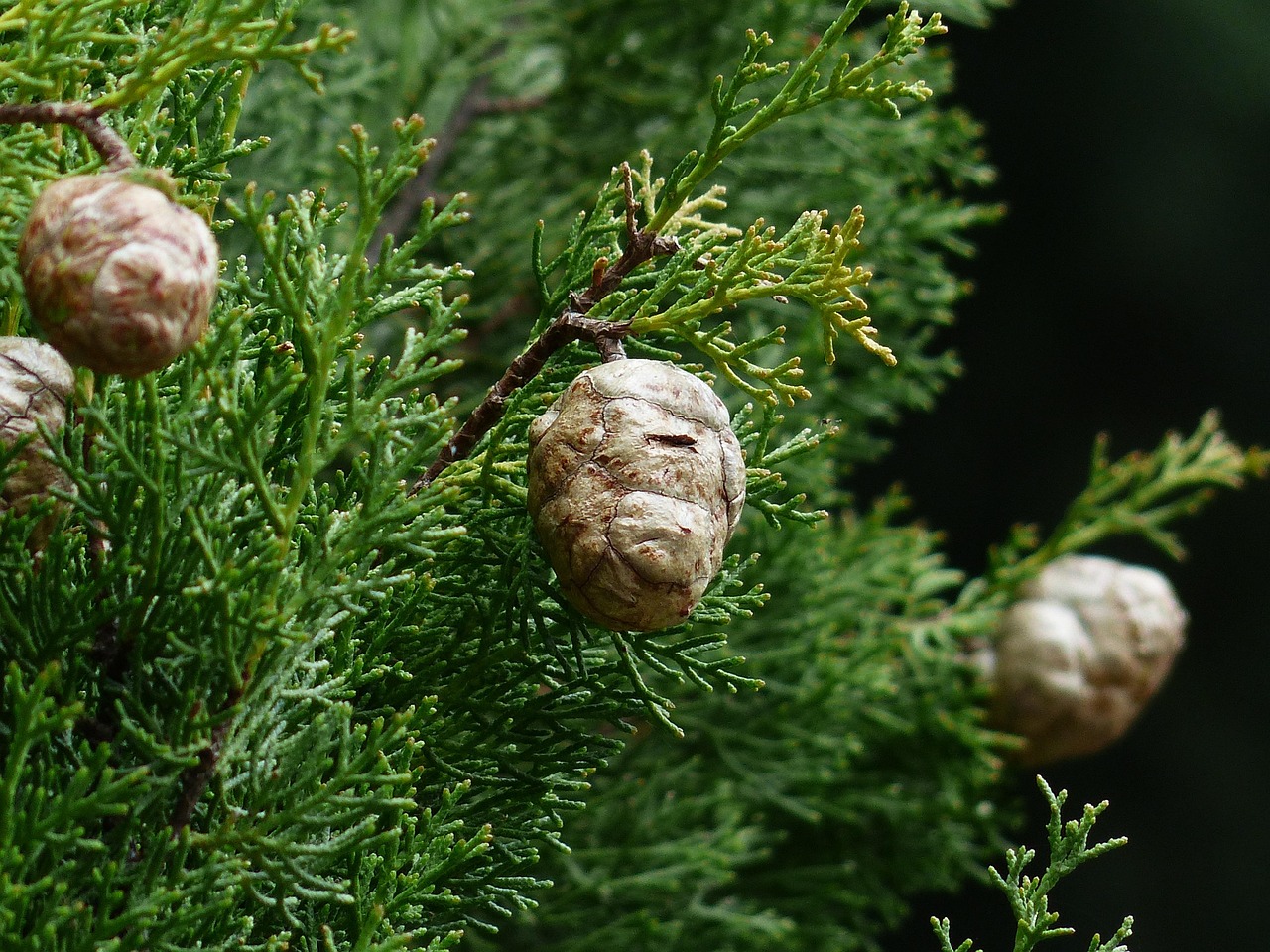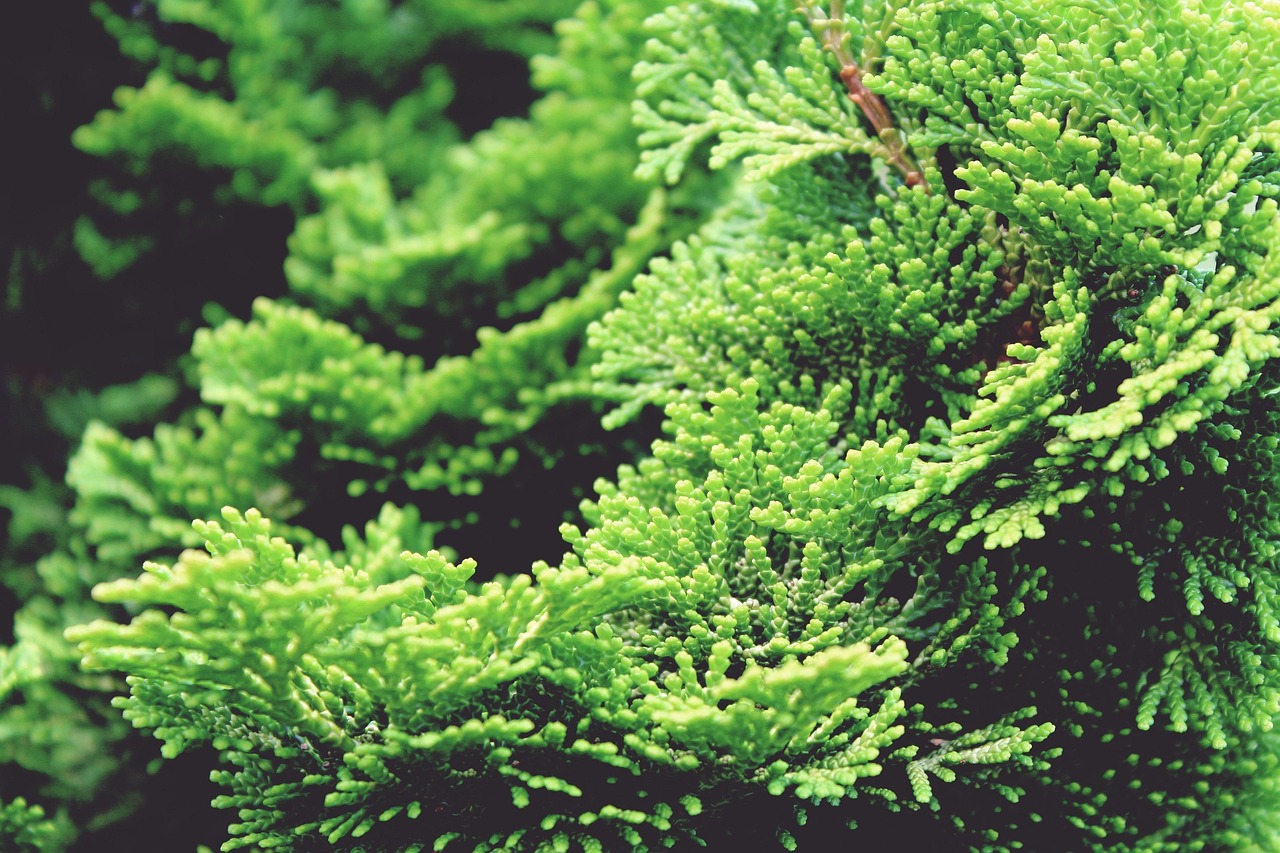Leyland cypress trees typically grow at a rapid rate of 3 to 4 feet per year under ideal conditions. This makes them an excellent choice for fast-growing privacy hedges, providing quick coverage and protection from prying eyes.
When it comes to creating privacy in your yard, Leyland cypress trees are a popular option. Their dense foliage and rapid growth rate make them ideal for forming natural barriers. Homeowners often choose these trees for their ability to provide quick shelter and enhance outdoor spaces. Additionally, they are evergreen, meaning they retain their leaves year-round, ensuring privacy even in winter months.

The Leyland cypress is a hybrid tree, a cross between the Monterey cypress and the Nootka cypress. This hybrid vigor contributes to its impressive growth rate and adaptability to various soil types. However, understanding the growth requirements and characteristics of this tree is essential for successful cultivation.
Growth Factors
Several factors influence the growth rate of Leyland cypress trees. These factors include soil quality, water availability, sunlight exposure, and climate conditions. Each of these elements plays a crucial role in determining how quickly and healthily these trees will grow.
- Soil Quality: Leyland cypress thrives in well-drained soil. Sandy loam or clay loam is ideal, as it provides adequate nutrients while allowing for proper drainage.
- Water Availability: Consistent watering is necessary, especially during the first few years of growth. Young trees benefit from regular watering to establish strong root systems.
- Sunlight Exposure: These trees prefer full sun and grow best with at least six hours of direct sunlight each day. Insufficient light can slow their growth rate.
- Climate Conditions: Leyland cypress grows well in USDA zones 6 through 10. They are tolerant of various climates but may struggle in extreme cold or heat without proper care.
Understanding these factors helps ensure that Leyland cypress trees reach their full potential. Proper care can lead to remarkable growth rates, making them an attractive choice for homeowners seeking quick privacy solutions.

Planting and Maintenance
To achieve optimal growth rates, planting and maintenance practices should be carefully considered. Here are some essential steps to ensure your Leyland cypress trees thrive:
- Choosing the Right Location: Select a spot that gets full sunlight and has well-drained soil. Avoid areas with heavy shade or poor drainage.
- Spacing: When planting multiple trees for a hedge, space them about 5 to 10 feet apart. This allows ample room for growth while maintaining dense coverage.
- Watering: Water newly planted trees thoroughly and regularly during dry spells. Established trees generally require less frequent watering but still benefit from occasional deep watering.
- Fertilization: Use a balanced fertilizer during the growing season to promote healthy growth. A slow-release fertilizer can provide nutrients over time.
- Pruning: Prune Leyland cypress trees selectively to maintain their shape and encourage thicker growth. This should be done in late winter or early spring before new growth begins.
By following these guidelines, you can enhance the growth rate of your Leyland cypress trees and create a lush, green privacy hedge in no time.
Common Issues
Even with proper care, Leyland cypress trees can experience issues that may affect their growth rate. Some common problems include:

- Pests: Aphids and spider mites can infest Leyland cypress trees, leading to weakened growth. Regular monitoring can help catch infestations early.
- Diseases: Fungal diseases like cankers can affect Leyland cypress trees, especially in poorly drained soils. Maintaining good airflow and proper watering practices can help prevent these issues.
- Environmental Stress: Extreme temperatures or drought conditions can slow growth. Providing adequate water and shade during heatwaves can help mitigate stress on the trees.
Awareness of these common issues will enable you to take proactive measures to ensure your Leyland cypress trees remain healthy and continue growing at their impressive rates.
Optimal Conditions for Growth
To achieve the fastest growth rates for Leyland cypress trees, it is essential to provide optimal growing conditions. These trees flourish when planted in environments that meet their specific needs. Understanding these conditions can help homeowners create an ideal setting for their privacy hedges.
Soil Requirements
The soil quality significantly impacts the growth rate of Leyland cypress trees. Here are key aspects to consider:
- Drainage: Leyland cypress prefers well-drained soil. Heavy, clay soils can lead to root rot and other issues, slowing growth.
- Nutrient Content: The soil should be rich in organic matter. Adding compost can improve soil quality and promote better growth.
- pH Levels: Leyland cypress trees thrive in slightly acidic to neutral soils, with a pH range of 6.0 to 7.0. Testing the soil can help determine if amendments are necessary.
Watering Practices
Watering is crucial for the establishment and sustained growth of Leyland cypress trees. Consider the following practices:

- Initial Watering: Newly planted trees should receive deep watering at least once a week for the first few months to encourage root development.
- Established Trees: Once established, Leyland cypress is relatively drought-tolerant but benefits from deep watering during prolonged dry spells.
- Mulching: Applying a layer of mulch around the base of the trees can help retain moisture, suppress weeds, and regulate soil temperature.
Fertilizing Leyland Cypress Trees
Fertilization can significantly enhance the growth rate of Leyland cypress trees. Here are some guidelines for effective fertilization:
- Timing: Fertilize in early spring as new growth begins. This timing allows nutrients to support the upcoming growing season.
- Type of Fertilizer: Use a balanced slow-release fertilizer that contains nitrogen, phosphorus, and potassium. A ratio such as 10-10-10 is generally effective.
- Application Method: Spread the fertilizer evenly around the base of the tree, avoiding direct contact with the trunk. Water thoroughly after application to help nutrients penetrate the soil.
Pest and Disease Management
While Leyland cypress trees are generally resilient, they can attract pests and diseases that may hinder their growth. Taking preventive measures is crucial. Here are some common pests and diseases to watch for:
Pests
- Aphids: These small insects can weaken the tree by sucking sap. Regularly inspecting foliage for early signs of infestation can help manage their population.
- Spider Mites: Often found in dry conditions, spider mites can cause yellowing of leaves. Increasing humidity around trees can help deter them.
- Caterpillars: Various caterpillar species may feed on Leyland cypress foliage. Manual removal or insecticidal soap can be effective treatments.
Diseases
- Cankers: These fungal infections can cause dieback and yellowing of foliage. Proper spacing between trees improves air circulation, helping to prevent this issue.
- Root Rot: Caused by overwatering or poor drainage, root rot can severely impact growth. Ensure proper drainage practices and avoid waterlogged soil.
Environmental Considerations
The growing environment plays a vital role in the health and growth rate of Leyland cypress trees. Factors such as climate, sunlight exposure, and surrounding vegetation can influence their performance.
- Climate Adaptability: Leyland cypress is adaptable but performs best in mild climates. Extreme weather conditions can stress the trees.
- Sunlight Needs: Full sun is essential for optimal growth. Planting in shaded areas can hinder growth rates significantly.
- Competing Vegetation: Ensure that competing plants do not overshadow young Leyland cypress trees. This competition for resources can stunt their growth.
By addressing these environmental considerations, you can create a thriving environment for your Leyland cypress trees, promoting rapid growth and health as they become a robust privacy hedge.
Pruning and Shaping Leyland Cypress Trees
Pruning is an essential aspect of maintaining Leyland cypress trees, especially for those planted as privacy hedges. Proper pruning helps encourage healthy growth, maintain shape, and improve overall appearance. Here are some important considerations regarding pruning:
When to Prune
The best time to prune Leyland cypress trees is during late winter or early spring. Pruning at this time allows the trees to recover quickly before the growing season begins. Avoid heavy pruning in late summer or fall, as this can stimulate new growth that may not harden off before winter.
Pruning Techniques
There are several techniques to consider when pruning Leyland cypress:
- Selective Pruning: Focus on removing any dead, damaged, or diseased branches. This encourages healthy growth and improves the tree’s overall vigor.
- Shaping: Lightly trim the sides and top of the tree to maintain a desired shape. Aim for a natural-looking appearance rather than a strict geometric form.
- Thinning: Thinning out dense areas can improve airflow and light penetration, reducing the risk of disease while promoting a healthy structure.
Tools for Pruning
Using the right tools makes pruning easier and more effective. Here are some tools that can be helpful:
- Hand Pruners: Ideal for small branches and fine detail work.
- Loppers: Useful for thicker branches that are beyond the reach of hand pruners.
- Hedge Shears: Great for shaping and trimming the overall height of the hedge.
- Pruning Saw: Necessary for larger branches that require more power to cut through.
Using Leyland Cypress for Privacy Hedges
Many homeowners choose Leyland cypress trees specifically for creating privacy hedges. Their fast growth and dense foliage make them an ideal option for those seeking seclusion in outdoor spaces. Understanding how to effectively use these trees for hedging can maximize their benefits.
Designing Your Hedge
When planning a privacy hedge with Leyland cypress, consider the following design elements:
- Height and Width: Decide on the ultimate height and width of your hedge based on your privacy needs. Leyland cypress can grow up to 60 feet tall and 15-25 feet wide. Ensure spacing allows for mature growth.
- Linearity: For a more formal look, you may want to plant in straight lines. For a more natural appearance, a staggered or curved planting pattern can be visually appealing.
- Layering: Consider layering different heights and types of plants around your Leyland cypress for added interest and diversity in your landscape design.
Planting Techniques
Proper planting techniques are critical to establishing a robust privacy hedge. Here are some steps to follow:
- Select Healthy Plants: Choose healthy Leyland cypress trees from a reputable nursery. Look for strong stems and vibrant foliage.
- Digging the Hole: Dig a hole that is twice as wide as the root ball but no deeper than the root ball itself. This encourages lateral root growth.
- Positioning: Place the tree in the center of the hole, ensuring that the top of the root ball is level with the surrounding soil.
- Backfilling: Fill the hole with soil, gently tamping it down as you go to eliminate air pockets.
- Watering: Water thoroughly after planting to help settle the soil around the roots.
Seasonal Care Practices
Caring for Leyland cypress trees throughout the seasons helps ensure their health and growth rate remain optimal. Here are seasonal care practices to consider:
Spring Care
- Fertilizing: Apply a balanced fertilizer as new growth begins in early spring.
- Pruning: Conduct any necessary pruning to shape trees before they enter their active growth phase.
Summer Care
- Watering: Monitor moisture levels, especially during dry spells. Ensure young trees receive enough water.
- Pest Control: Keep an eye out for pests like aphids or spider mites, addressing any issues promptly.
Fall Care
- Mulching: Apply mulch around the base to retain moisture as temperatures drop.
- Final Pruning: Make any final adjustments to shape before winter sets in.
winter Care
- Protection from Cold: In colder regions, consider wrapping young trees with burlap to protect against harsh winds and frost.
- Irrigation Check: Ensure that watering practices are adjusted based on rainfall and temperature fluctuations.
By implementing these seasonal care practices, you can support the ongoing health and rapid growth of your Leyland cypress trees as they develop into an effective privacy hedge.
Additional Considerations for Leyland Cypress Trees
In addition to the care practices and growth strategies previously discussed, there are a few more considerations to keep in mind when cultivating Leyland cypress trees for privacy hedges. These factors can further enhance their health, growth rate, and overall effectiveness as a natural barrier.
Environmental Impact
Planting Leyland cypress trees can have a positive environmental impact. Here are some benefits:
- Air Quality Improvement: Like all trees, Leyland cypress contributes to improved air quality by absorbing carbon dioxide and releasing oxygen.
- Habitat Creation: These trees can provide habitat for various birds and small wildlife, contributing to local biodiversity.
- Soil Erosion Prevention: The root systems of Leyland cypress help stabilize soil, reducing erosion, especially on slopes.
Choosing the Right Variety
While Leyland cypress is widely known for its fast growth and lush foliage, there are different cultivars available. Some may be better suited to specific climates or landscape designs. Researching and selecting the right variety can enhance your results.
- Standard Leyland Cypress: This is the commonly available variety that reaches significant heights quickly.
- Dwarf Varieties: For smaller spaces or lower hedges, consider dwarf cultivars that maintain a compact size while still providing privacy.
Potential Alternatives
If you’re considering alternatives to Leyland cypress for privacy hedges, there are several options that also offer rapid growth and dense foliage:
- Green Giant Arborvitae: Similar in appearance and growth rate, Green Giant Arborvitae is another excellent choice for privacy screening.
- Thuja Occidentalis: Commonly known as Eastern Arborvitae, this tree is also fast-growing and can serve as an effective hedge.
- Boxwood: For a more formal hedge, boxwood offers slow but dense growth and can be shaped easily.
Final Thoughts
Leyland cypress trees are an exceptional choice for creating fast-growing privacy hedges. Their impressive growth rate, adaptability to various conditions, and evergreen nature make them ideal for homeowners seeking seclusion and protection from the elements. By understanding their specific needs—such as soil quality, watering practices, and pest management—you can ensure that your Leyland cypress trees thrive.
Seasonal maintenance, including proper pruning and fertilization, is crucial for maintaining the health and appearance of these trees throughout the year. As you plan your landscaping, consider incorporating Leyland cypress into your design for an attractive and functional privacy screen. With diligent care, your Leyland cypress trees will provide lasting beauty and shelter in your outdoor space for many years to come.
In summary, whether you are starting with young seedlings or established trees, focusing on the factors discussed will help you cultivate a thriving hedge. The Leyland cypress can enhance privacy while contributing positively to your landscape’s aesthetics and environmental health.
